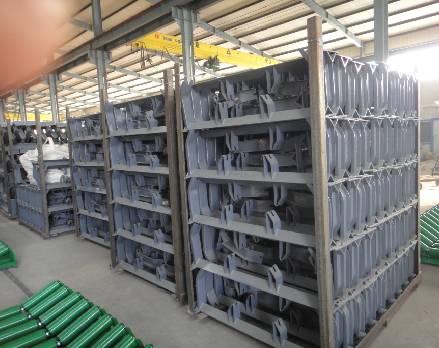 Afrikaans
Afrikaans  Albanian
Albanian  Amharic
Amharic  Arabic
Arabic  Armenian
Armenian  Azerbaijani
Azerbaijani  Basque
Basque  Belarusian
Belarusian  Bengali
Bengali  Bosnian
Bosnian  Bulgarian
Bulgarian  Catalan
Catalan  Cebuano
Cebuano  Corsican
Corsican  Croatian
Croatian  Czech
Czech  Danish
Danish  Dutch
Dutch  English
English  Esperanto
Esperanto  Estonian
Estonian  Finnish
Finnish  French
French  Frisian
Frisian  Galician
Galician  Georgian
Georgian  German
German  Greek
Greek  Gujarati
Gujarati  Haitian Creole
Haitian Creole  hausa
hausa  hawaiian
hawaiian  Hebrew
Hebrew  Hindi
Hindi  Miao
Miao  Hungarian
Hungarian  Icelandic
Icelandic  igbo
igbo  Indonesian
Indonesian  irish
irish  Italian
Italian  Japanese
Japanese  Javanese
Javanese  Kannada
Kannada  kazakh
kazakh  Khmer
Khmer  Rwandese
Rwandese  Korean
Korean  Kurdish
Kurdish  Kyrgyz
Kyrgyz  Lao
Lao  Latin
Latin  Latvian
Latvian  Lithuanian
Lithuanian  Luxembourgish
Luxembourgish  Macedonian
Macedonian  Malgashi
Malgashi  Malay
Malay  Malayalam
Malayalam  Maltese
Maltese  Maori
Maori  Marathi
Marathi  Mongolian
Mongolian  Myanmar
Myanmar  Nepali
Nepali  Norwegian
Norwegian  Norwegian
Norwegian  Occitan
Occitan  Pashto
Pashto  Persian
Persian  Polish
Polish  Portuguese
Portuguese  Punjabi
Punjabi  Romanian
Romanian  Russian
Russian  Samoan
Samoan  Scottish Gaelic
Scottish Gaelic  Serbian
Serbian  Sesotho
Sesotho  Shona
Shona  Sindhi
Sindhi  Sinhala
Sinhala  Slovak
Slovak  Slovenian
Slovenian  Somali
Somali  Spanish
Spanish  Sundanese
Sundanese  Swahili
Swahili  Swedish
Swedish  Tagalog
Tagalog  Tajik
Tajik  Tamil
Tamil  Tatar
Tatar  Telugu
Telugu  Thai
Thai  Turkish
Turkish  Turkmen
Turkmen  Ukrainian
Ukrainian  Urdu
Urdu  Uighur
Uighur  Uzbek
Uzbek  Vietnamese
Vietnamese  Welsh
Welsh  Bantu
Bantu  Yiddish
Yiddish  Yoruba
Yoruba  Zulu
Zulu Exploring Essential Components for Efficient Conveyor Systems in Various Industries and Applications
Understanding Conveyor Parts Essential Components for Efficient Material Handling
Conveyor systems are integral to modern manufacturing and logistics industries, ensuring that materials are transported with speed and efficiency. At the heart of these systems are various conveyor parts, each playing a critical role in the overall functionality and reliability of the equipment. Understanding these components is essential for anyone involved in the design, maintenance, or operation of conveyor systems.
1. Conveyor Belts
One of the most recognizable parts of a conveyor system is the conveyor belt itself. These belts are designed to move materials from one point to another and can vary widely in material, width, and design based on the application requirements. Common materials used for conveyor belts include rubber, plastic, and metal. The choice of belt affects not only the durability and load capacity but also how products are transferred. For instance, heavy-duty belts are used for transporting large and abrasive materials, while lighter belts may be suitable for smaller packages or fragile items.
2. Rollers
Rollers are crucial for supporting the conveyor belt and allowing it to move smoothly. They reduce friction and enable the belt to transport materials efficiently. There are several types of rollers, including idler rollers, which support the belt's weight and assist in maintaining tension, and drive rollers, which are powered to move the belt. Proper roller alignment and maintenance are vital to ensure the conveyor system operates without hiccups.
The structural integrity of a conveyor system largely depends on its frame and support components. Conveyor frames are typically made of steel or aluminum and must be robust enough to withstand the stress of heavy loads while enduring environmental conditions. Support systems such as legs, brackets, and cross members help stabilize the conveyor and ensure it remains level during operation. Regular inspections of these components are necessary to ensure longevity and prevent structural failures.
conveyor parts

4. Drive Systems
Drive systems power the movement of the conveyor belt. These systems can be electric motors, hydraulic systems, or even manual drives in smaller setups. Gearboxes also play a crucial role in determining the speed and torque needed to move materials efficiently. The selection of an appropriate drive system impacts the operational efficiency and energy consumption of the conveyor system.
5. Conveying Accessories
Various accessories enhance the functionality of conveyor systems. These include pulleys, which are used to redirect the belt and maintain tension, and chains, which may be employed in certain types of conveyor designs. Additionally, skirts, guards, and dust covers protect the materials being transported and improve workplace safety by preventing spills and reducing dust pollution.
6. Sensors and Controls
In today's automated environments, sensors and control systems are vital for managing conveyor operations. These components monitor the performance, detect issues, and signal maintenance needs. Advanced sensors can provide data on material flow, belt speed, and system wear, leading to proactive maintenance strategies that prevent downtime and optimize performance.
Conclusion
In conclusion, understanding the various parts of conveyor systems is essential for ensuring efficient and reliable material handling. Each component, from belts and rollers to drive systems and sensors, plays a pivotal role in the overall functionality of the system. By maintaining and optimizing these components, businesses can enhance productivity, reduce operational costs, and ensure safety in their manufacturing and logistics processes. As industries continue to evolve, the importance of conveyor parts will only grow, underscoring the need for ongoing education and innovation in this critical area of industrial engineering.
-
Revolutionizing Conveyor Reliability with Advanced Rubber Lagging PulleysNewsJul.22,2025
-
Powering Precision and Durability with Expert Manufacturers of Conveyor ComponentsNewsJul.22,2025
-
Optimizing Conveyor Systems with Advanced Conveyor AccessoriesNewsJul.22,2025
-
Maximize Conveyor Efficiency with Quality Conveyor Idler PulleysNewsJul.22,2025
-
Future-Proof Your Conveyor System with High-Performance Polyurethane RollerNewsJul.22,2025
-
Driving Efficiency Forward with Quality Idlers and RollersNewsJul.22,2025





























